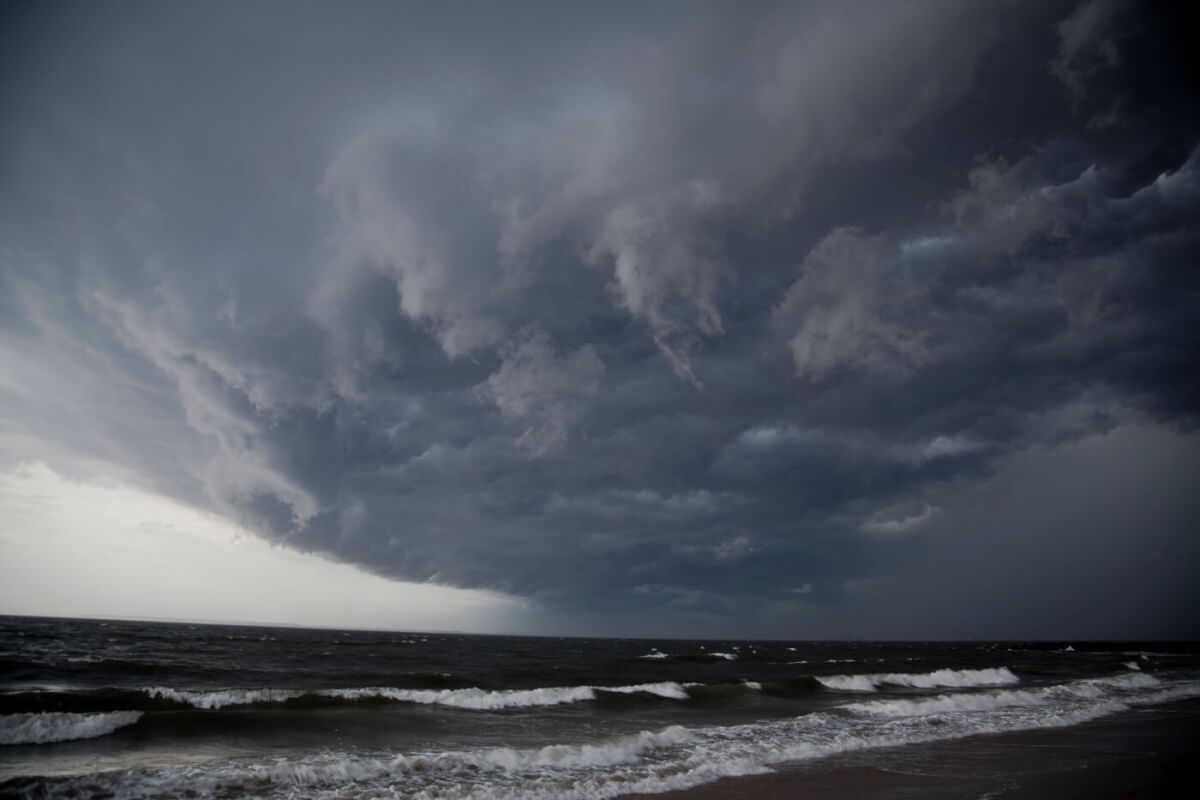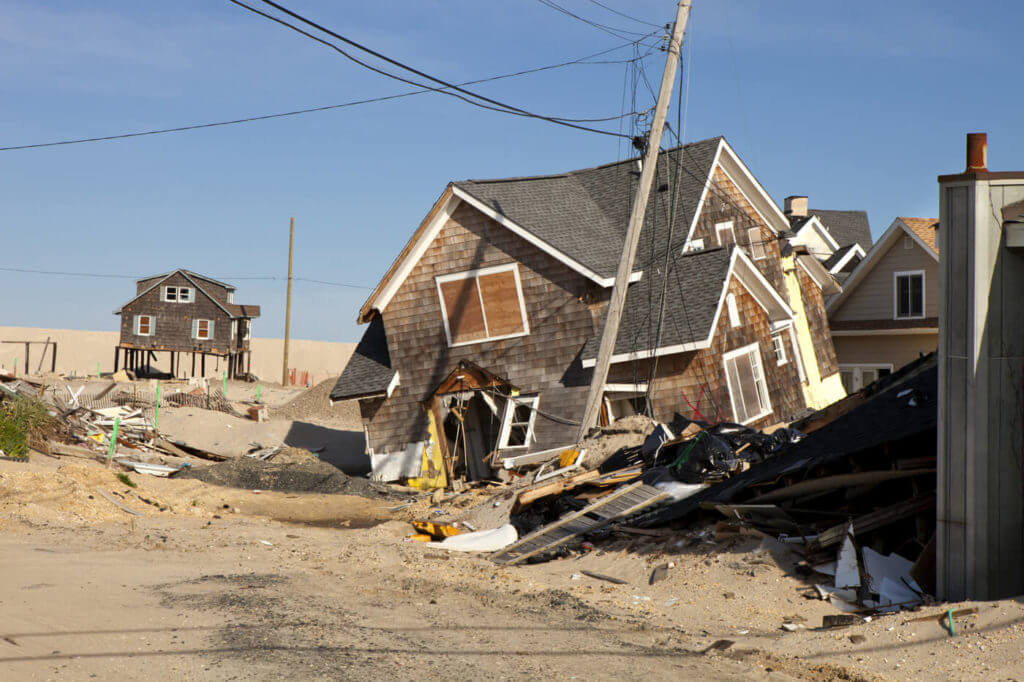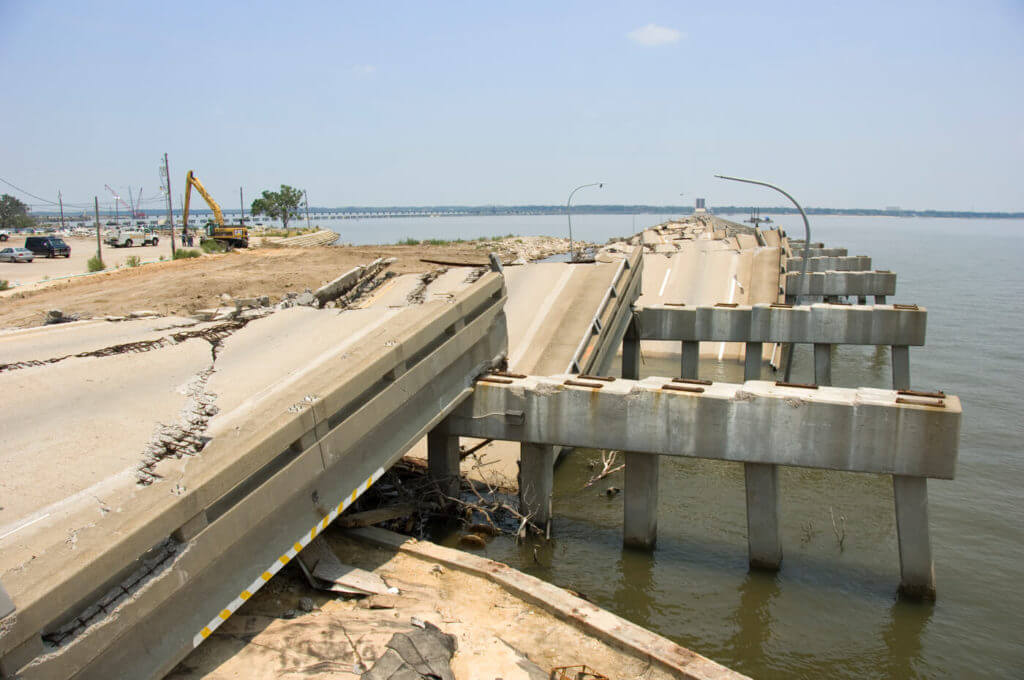I love storms and I love to be outside, but when I watched the formation of Hurricane Katrina from my television, far away in California, it was one of the rare times that I felt glad to be in front of my TV.
The news meteorologists talked about the various levels of hurricanes on the Saffir-Simpson scale, and how each greater level meant more devastation. As the huge storm moved on a trajectory to Louisiana, newscasters showed pictures of long stretches of highways filled bumper to bumper with cars full of people trying to get out. The rain was falling and pictures showed boarded-up stores and trees swaying deeply in the increasing wind. Despite the very dire warnings, some people chose to not get out. After all, there have been other “false alarms” where the hurricane dwindled away, or changed course.
For those who chose to stay, or who had no choice but to stay, the high winds and heavy rains took down electrical lines, destroyed buildings, and moved through the area like a giant 175 mph eraser. If you survived the days of horror, your misery had just begun. Your home could be underwater, and there would be nothing to go back to. Destroyed. Help was slow in coming, and “law and order” was nonexistent. Welcome to post-hurricane chaos.
Anatomy of a Hurricane
 What exactly is a hurricane? For one thing, there is no other storm on earth quite like a hurricane. From a satellite, the hurricane is a powerful and tightly coiled weather system. According to meteorologists, it is the most powerful of the tropical cyclones, which is a general term for all of the circulating weather systems over tropical waters.
What exactly is a hurricane? For one thing, there is no other storm on earth quite like a hurricane. From a satellite, the hurricane is a powerful and tightly coiled weather system. According to meteorologists, it is the most powerful of the tropical cyclones, which is a general term for all of the circulating weather systems over tropical waters.
There is the tropical depression, which will have maximum sustained winds up to 38 mph (or less). Then there is the tropical storm, a bit stronger, with maximum sustained winds of 39 to 73 mph. Then there is the hurricane. This is an intense system with maximum sustained winds of 74 mph or higher.
The most vulnerable area for the creation of hurricanes in the ocean is the area between latitudes 8 degrees and 20 degrees north and south. High humidity, light winds, and a warm sea surface temperature set the stage for the creation of the hurricane. As the storm develops, the Coriolis effect causes the winds to rotate counterclockwise (in the Northern Hemisphere), as the winds and thunderstorms increase.
Hurricanes are powered by the heat from the sea, and are steered along by easterly trade winds and the temperate westerly winds, as well as their own incredible energy that they create. Winds are howling at the core of the hurricane, and the seas are violent. As the huge system moves ashore, tornadoes, torrential rains, and floods result.
The term “hurricane” (from an Arawak word meaning “storm”) is used for tropical storms in the Atlantic and Eastern Pacific. In the western Pacific and China Sea, these storms are called “typhoons” (from the Cantonese word “taifung” meaning “great wind”). Down in Australia, these storms are called “cyclones.”
In order to further categorize hurricanes, these intense storms over 74 mph., consulting engineer Herbert Saffir and meteorologist Robert Simpson developed the “Saffir-Simpson Scale” in the 1970s. Hurricanes are delineated into 5 categories, depending on strength.
• Category One means the winds are from 74 to 95 mph, storm surges from 4 to 5 feet, and generally minimal damage.
• Category Two has winds from 96 to 110 mph, 6 to 8 feet storm surges, and moderate damage. • Category Three has winds from 111 to 130 mph., storm surges from 9 to 12 feet, and extensive damage. • Category Four has winds from 131 to 155 mph, storm surges from 13 to 18 feet, and extreme damage. • Category Five, the strongest, has a wind speed of more than 155, storm surges more than 18 feet (no time for surfing!), and the damage is typically catastrophic.
Famous examples of the five categories of hurricanes.
| Category | Wind Speeds | Storm Surge | Hurricane |
| 1 | 74-95 mph | 4 to 5 feet | Allison, 1995, No deaths Floyd, 1999, 69 deaths |
| 2 | 96 – 110 mph | 6 to 8 feet | Bonnie, 1998, 3 deaths |
| 3 | 111 – 130 mph | 9 to 12 feet | Fran, 1996, 34 deaths |
| 4 | 131 – 155 mph | 13-18 feet | Andrew, 1992, 65 deaths Luis, 1995, 17 deaths |
| 5 | Greater than 155 mph | Greater than 18 feet | Hugo, 1989, 82 deaths Mitch, 1998, over 11,000 deaths Katrina, 2005, 1,836 deaths |
How are People Affected?
Hurricanes Andrew and Katrina were both Category Five storms. This means that entire swaths of cities and neighborhoods were ripped apart and left in rubble during an event that lasted days. Thousands were left homeless, and many died.
Though a category one hurricane could be experienced as a temporary inconvenience, it should be clear that the hurricane is like no other storm. Like it or not, once the hurricane is on a collision path with you and your neighborhood and your city, normal life is disrupted, and sometimes totally ripped apart. The storm can be two miles across and winds (in the highest category) can be 180 mph, something that survivors describe as “unfathomable, indescribable.” All of the normal functioning of daily life comes to a halt as the hurricane roars through the terrain. That means you’re not going to your job, or to school, the farm, hospital or anywhere else.
The electricity will fail, and communication will become spotty. As people try to move to higher ground, the roads and highways get crowded, and some become unusable. Your entire focus becomes securing your home in case you try to hole up there for the duration, or doing whatever it takes to get out of Dodge City as rapidly as possibly. Oh, and then there are young children, and sick people, and they will need assistance.
As the hurricane threatens, and moves over your city, your life is reduced to bare essentials, and anything that isn’t absolutely necessary will not be done. You are in survival mode.
What You Can Do to Survive
Many have survived lesser level hurricanes simply by taking common sense precautions. We’ve had discussions with families who stocked up their home, closed and boarded everything up, and stayed home for a week or so of a semi-frightening event. They experienced blackouts, and some damage to their home, some flooding in their vicinities, and they were able to carry on when the storm passed with limited impact to their daily lives.
But that is not always the case.
The details of how you can survive a hurricane, the skills needed, and the supplies you should have will vary from case to case. But let’s start from the beginning: your home, and your location.
One of the easy ways to more-or-less predict the future is to study what has happened in the past. United States hurricanes mostly occur in the Gulf coast, and some on the Atlantic seaboard. Get a map and look at the paths of all the major hurricanes. You live right in a path? It’s not always possible to simply move somewhere else. Millions of people live there, right in the path of hurricanes past and hurricanes to come. So it is very important to realize that some specific areas are ticking time bombs when it comes to hurricanes.
New Orleans, for example, is a city under water—literally, not figuratively. Not everyone realized that before Katrina, but the city was only kept dry by dikes that kept out a wall of up to nearly 20 feet of water. When Hurricane Katrina struck New Orleans, in addition to the intense winds and the pounding rain, the dikes that held back the ocean broke open, pouring water into the Lower Ninth Ward.
Try to move to higher ground. If fact, there are potential hazards wherever you live. And if hurricanes are your concern, you should relocate to a higher ground. Get a topographical map of your area, and talk with local geographers and real estate agents and do whatever you can to find the best possible areas to reside for some natural protection from a hurricane. That may be hard, but in many cases, the lay of the land dictates the way a storm moves through the landscape. Location matters.
Next, there are numerous ways to beef up your home to make it a few notches more resistant to storms. There was a time where a full basement was built before the house was built. Yes, this cost more, and especially in the heat of summer, and during tornadoes, this provided some means of protection. That’s an idea that builders should serious consider returning to as “normal.”
In Your Home
If you live in hurricane-prone zones, keep abreast of news reports when hurricanes are forming. When the hurricane is on its way, your job is to begin squaring away things that need to be secured, closing up windows or boarding them up, as appropriate.
Since a hurricane may very well mean evacuation, you need to have an evacuation plan. At what point do you decide to leave? Is your vehicle packed? Is it gassed up? What are you bringing along for the next few days or weeks? Do you have animals to attend to? Do you have a good idea of where to go? Have you been there before? Do you have a friend or relative somewhere out of the hurricane path where you can go? Have you established networks among your closest neighbors so you all help each other when things get serious?
If you live in some of the most vulnerable hurricane zones in the Gulf Coast, and you have no desire to move elsewhere, you should do everything you can to beef up your house with whatever extra money you have. And since you’ll probably want to stay in your home if you can, you should constantly stock up on all the supplies that you just won’t get if there’s a serious hurricane that disrupts travel and normal commerce.
Stay Afloat
Not commonly seen on the list of items to buy is the inflatable raft or canoe. Yet, after an area is flooded, that’s the only way you’re going to get around what was once your neighborhood. And rescues are only going to take place via helicopter or boats.
If you live in a hurricane or tornado zone, you may already take a lot of this for granted. Neighbors or relatives may have homes that have been damaged or destroyed before, and you know many who have survived the disaster; in some cases, depending on your level of preparedness, the hurricane was a major or minor inconvenience, and eventually, your life got back on track. In some cases, everything you knew was destroyed and you had to work hard to get back on your feet. Being prepared in advance means that you’ll be able to survive the emergency, and get back on your feet as soon as possible.
You need to be prepared with very basic supplies in your home, and you should have a basement room or windowless shelter where you can hide out when the very worst of the storm passes through.
Leave Home?
A big part of surviving a hurricane is the judgement call that you must make: Do I stay or do I evacuate? Naturally, people would rather stay home. But sometimes that just isn’t possible. And if you wait a bit too long, getting out becomes all that more difficult due to long traffic lines that are not moving, and pools of water that grow larger. In fact, as occurred in Hurricane Katrina, though 80 percent of the residents of New Orleans managed to evacuate, that still left 20 percent of the residents in their homes—mostly elderly, infirm, or too poor to even find a way to get out.
Part of making the decision to evacuate involves listening to what meteorologists and local officials are saying. In the case of Hurricane Katrina, there were many ordering people to evacuate, though the Mayor of New Orleans only suggested that people leave. When Mayor Ray Nagin finally ordered people to evacuate, it was a bit too late for many. Officials tried to use school buses to evacuate residents, but drivers were short supply and as the heavy rains increased, there was quickly no way to get out.
The lesson is that it is far better to be inconvenienced by a weeklong evacuation than to be stuck in a disastrous situation.
Your evacuation plan should include having a well-stocked car, and a pack in case you cannot get away by vehicle. Also consider a bicycle as a means of evacuation.
Editor’s note: A version of this article first appeared in the Doomsday 2016 issue of American Survival Guide.




